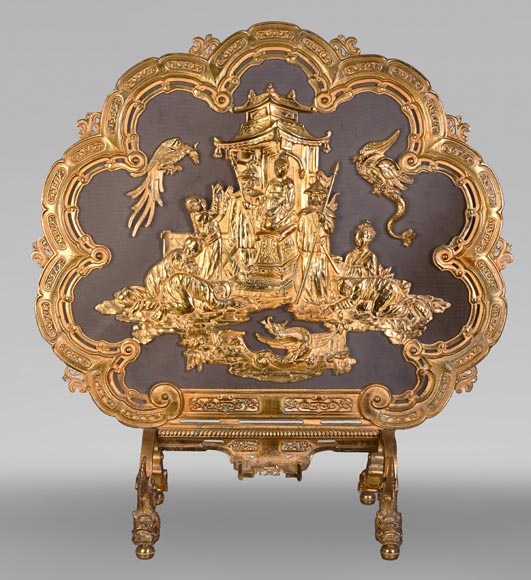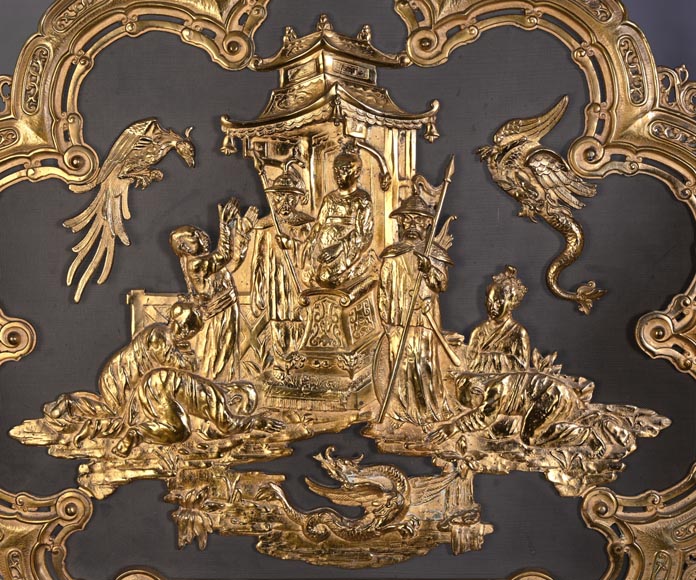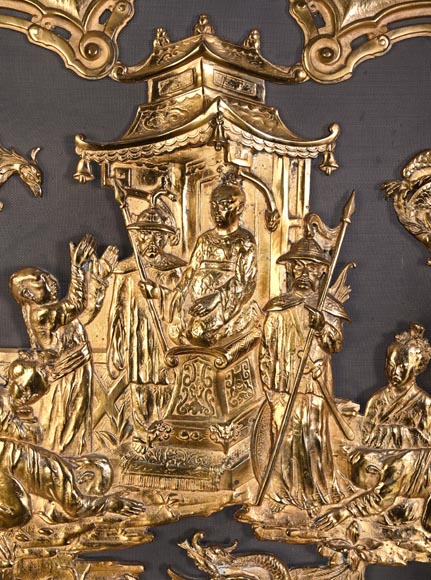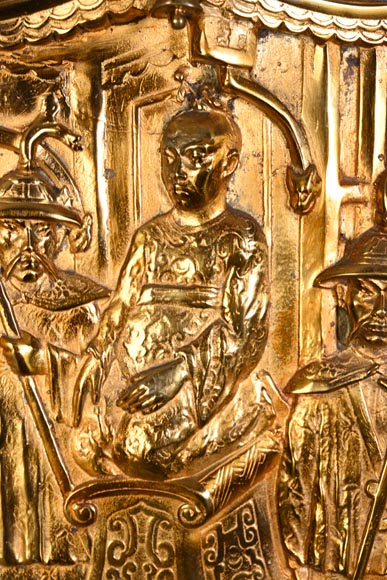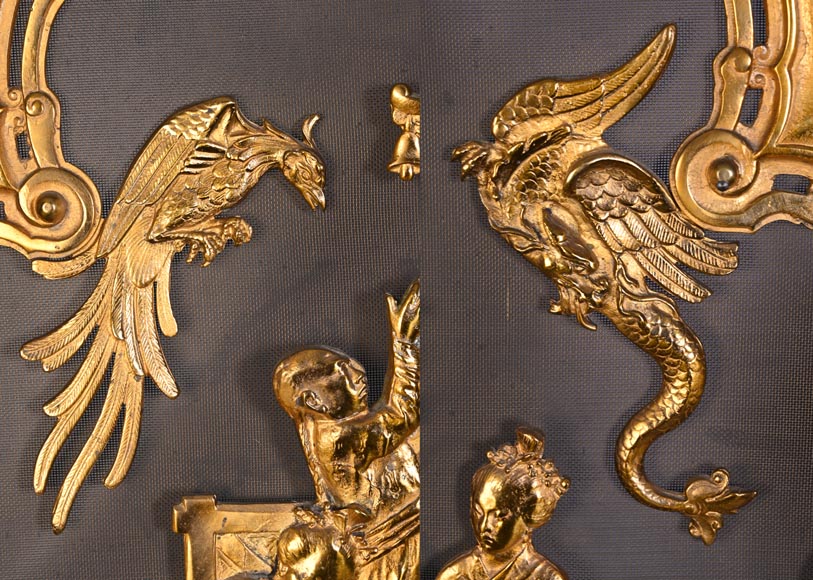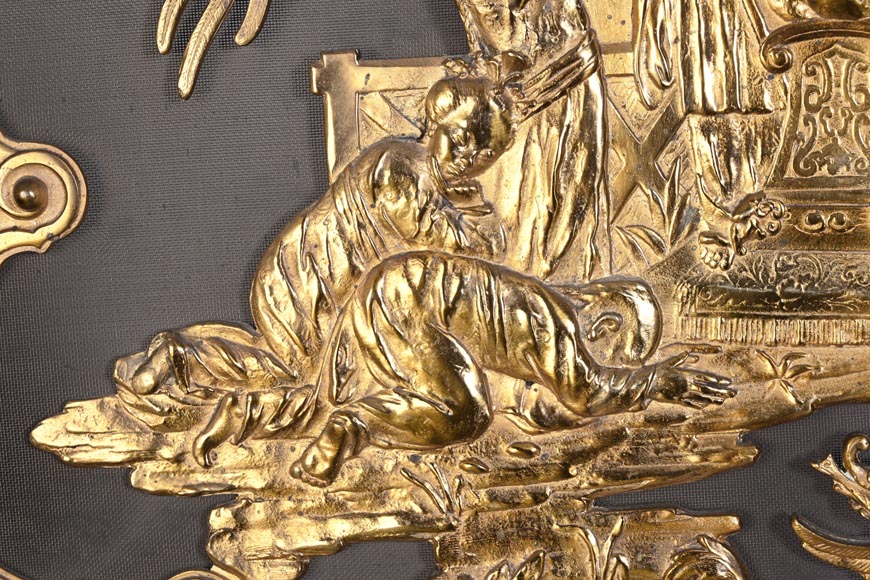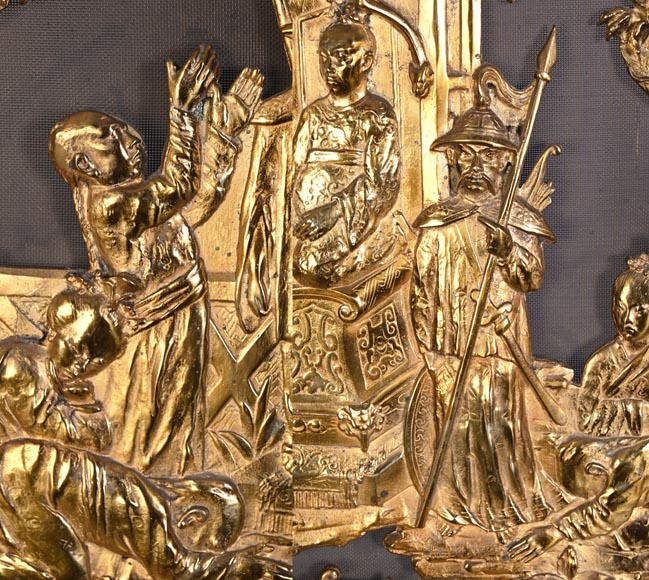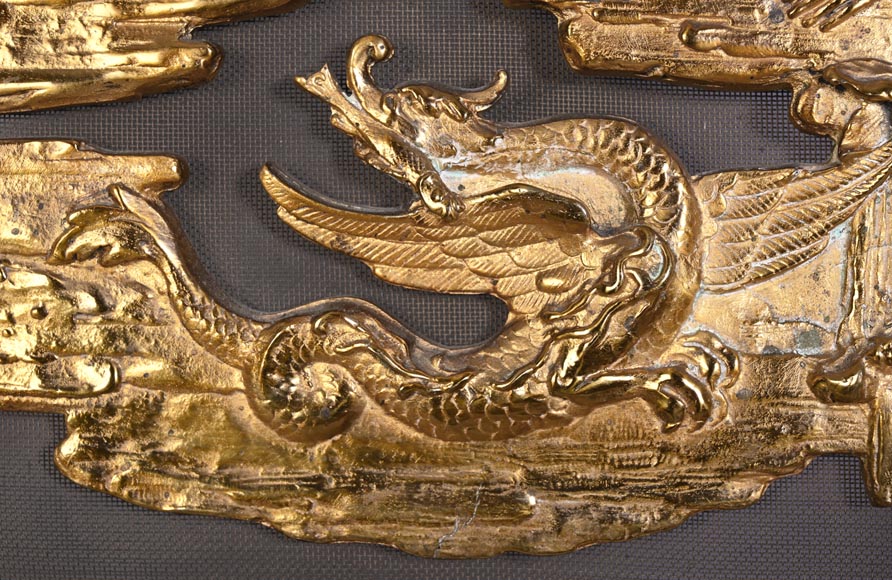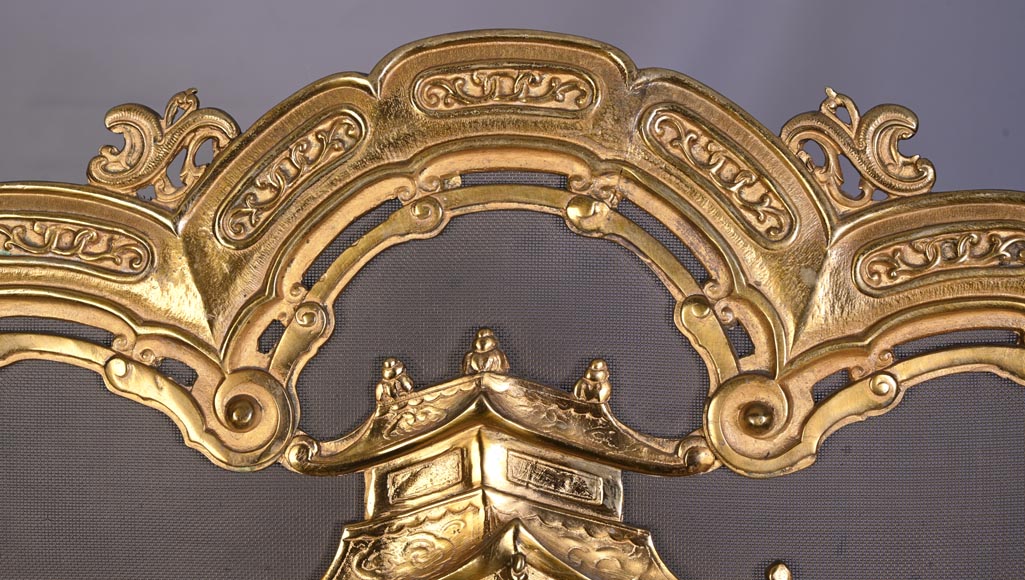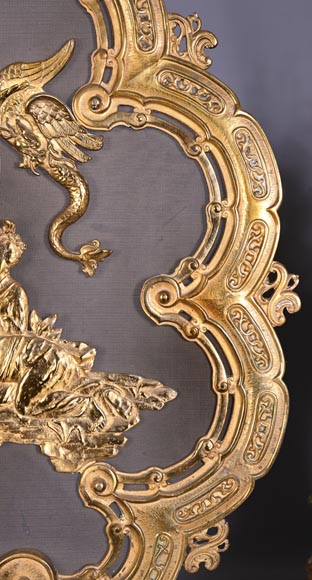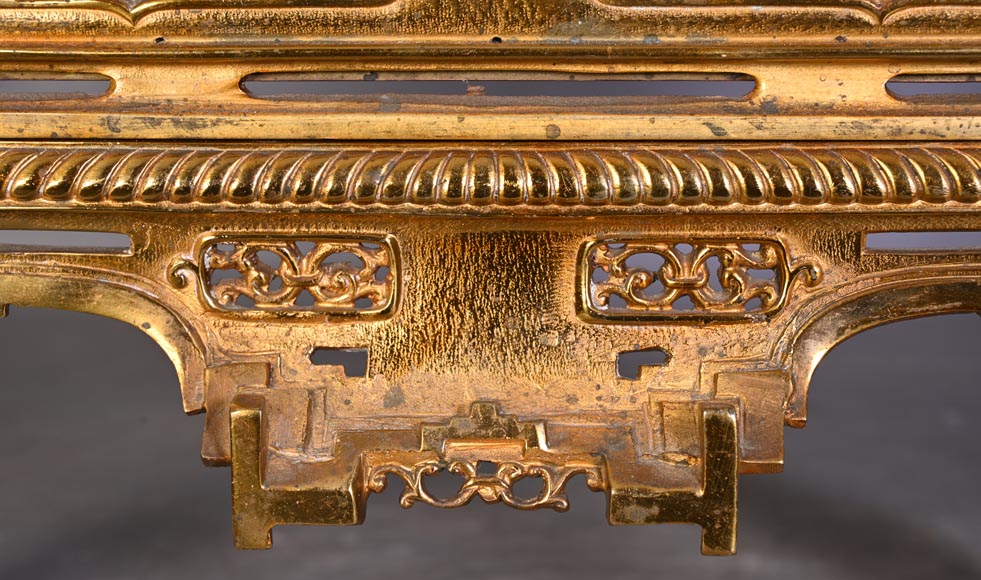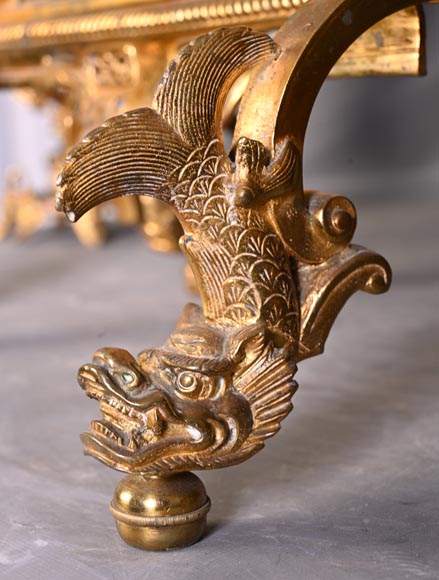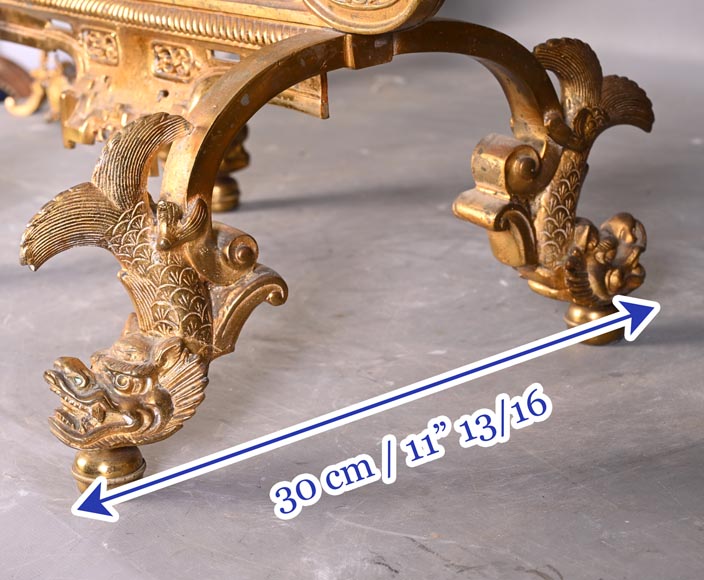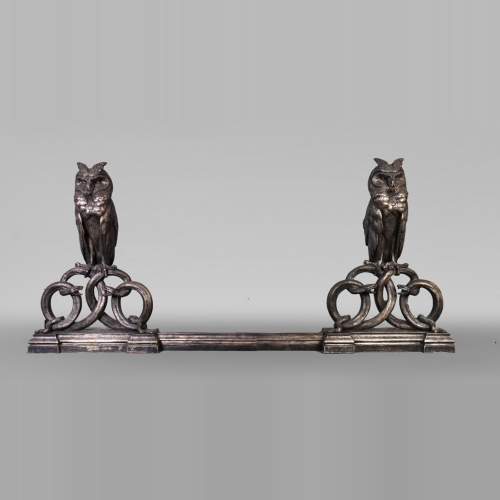Style Japonism, Chinoiserie / Ref.15719
Maison MARNYHAC (attrib.) — Rare Chinese-style Antique Fire Screen in Gilded Bronze, Second Half of the 19th Century
Dimensions
Width 28'' ⅜ 72cm
Height 30'' ¾ 78cm
Depth: 11'' ¾ 30cm
This rare Chinese-style antique fire screen was created in the second half of the 19th century. Thanks to the quality of the gilded bronze, its finely pierced decoration, and its style, this fire screen is attributed to Maison Marnyhac, a workshop specializing in luxury art objects, whose production was largely influenced by the Chinese and Japanese artistic trends of the time.
Maison Marnyhac was the trade name of the Société des Marbres et Bronzes Artistiques founded by Charles de Marnyhac in Paris, initially located on Avenue de l’Opéra, later moving to 1, Rue de la Paix. It rivaled the greatest houses of the period, notably Barbedienne, and the quality of its productions was recognized at the Universal Exhibitions of 1867 and 1878, where it was awarded medals. Its fame was such that the house opened an exhibition in London in 1875.
"In summary, and I conclude with this opinion, for which I am fully responsible, the exhibition of the Marnyhac house has clearly shown me that Paris has two Barbediennes — that is, two industrial artists unequaled anywhere in Europe. This achievement surely deserved a medal of honor; what say you?"
— Emile de Bergerat, The Masterpieces of Art at the Universal Exhibition of 1878, Paris, L. Baschet, 1878, p. 188.
The gilded bronze decoration is highly elaborate. The shaped frame is richly adorned with volutes and pierced motifs inspired by Chinese calligraphy. At the center, beneath a typical architectural structure, stands a stern-looking man, likely the Emperor, surrounded by his impassive guards and kneeling subjects. One of them, however, stands upright with arms raised toward the Emperor in an attitude of supplication. A phoenix and two chimera-like creatures close to dragon iconography surround the scene. The feet of the fire screen take the form of monstrous creatures reminiscent of the traditional Chinese Foo dogs.
The European fascination with Chinese art began as early as the 14th century and saw major development from the 18th century onward. With the eclecticism and Orientalism that characterized the 19th century, Chinese art continued to enjoy great success, particularly encouraged by the Universal Exhibitions. The 1867 Exhibition allowed Western artists to discover the Chinese and Japanese pavilions, bringing renewed momentum to this exotic inspiration. From then on, painters, decorators, and architects created an eclectic wave of both Japonisme and Chinoiserie, satisfying the 19th-century taste for curiosities and eccentricities.
Informations
Price: on request
Recommended for you :
Dimensions:
Width: 168
Height: 53
Depth: 10
Dimensions:
Width: 90
Height: 80
Depth: 34
Dimensions:
Width: 98
Height: 125
Depth: 40
Dimensions:
Width: 92
Height: 74
Depth: 22
Dimensions:
Width: 66
Height: 86
Depth: 25
Dimensions:
Width: 72
Height: 83
Depth: 21
Dimensions:
Width: 96
Height: 81
Depth: 25
Dimensions:
Width: 86
Height: 92
Depth: 30
Dimensions:
Width: 60
Height: 82
Depth: 21
Dimensions:
Width: 73
Height: 83
Depth: 37
Dimensions:
Width: 81
Height: 108
Depth: 33
Dimensions:
Width: 71
Height: 102
Depth: 19



